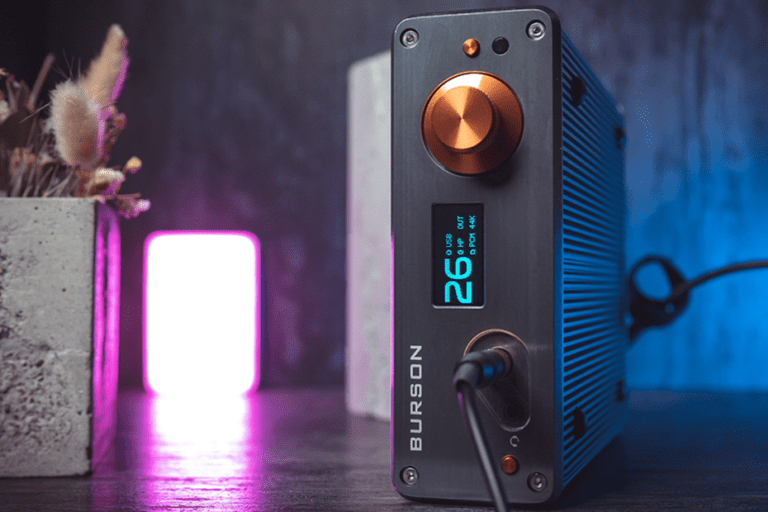
SIMGOT EA500 review and comparison with Moondrop Aria, Dunu Titan S and Tin T3 Plus.
This is my comprehensive review of the SIMGOT EA500, a new budget in-ear monitor (IEM) from the company.
EA500 features a 10mm Dual-Cavity Dynamic Driver with a 4th Generation DLC Composite Diaphragm. This IEM also comes with interchangeable nozzles, which provide users with two distinct target curves, allowing for customizable sound preferences. The metal shells and detachable cable further enhance the overall appeal and usability of the EA500.
Disclaimer: I want to thank SIMGOT for providing the sample for this review. No one paid me to make this review. I don’t offer any specific opinions. And all thoughts expressed in this review are my own.
The EA500 arrives in an attractive carton box. There is a a brand’s logo on the front of the box. There is a a list of technical specifications, including two frequency response graphs on the back.
In the box:
- Simgot EA500 IEMs
- Detachable 0.78mm 2-pin cable
- 2 pairs of tuning filters (red and black)
- 4 sets of black and red replaceable filter O-rings
- 3 pairs of silicone ear tips
- Carrying case
- User manual
The EA500 has an impedance of 16Ω and a sensitivity of 123dB, making it relatively easy to drive. Users can enjoy a high-quality listening experience even when using it with smartphones or portable devices.
Design & build
The shells are silver and shiny. They are made out of metal and have an oval shape. They are polished and have a delicate surface with a glossy finish with a Simgot logo placed on the face plate. Due to their nature, the shells are fingerprint magnets.
There is a clear channel marking on the inside part of the shell, along with a gold-plated torx screw. IEMs have two vent holes on the inside – one near the nozzle and the other one close to the edge of the shell and the second vent hole is covered with a mesh. The nozzles are metal too, they are 5.1mm in diameters and have average length. There is a metal mesh at the end of the nozzle and a small lip that helps with ear tips retainment
The nozzles are actually an interchangeable tuning filters and there are two sets included – the red ones and the black ones. Both filters have different impact on the sound and we will discuss it later in this review Overall the build quality is good and the glossy finish looks great.
Fit & comfort
The EA500 shells are made from metal, they are polished and there are no sharp edges here. They are medium in size and have ergonomic shape, but overall the fit of this IEM is still kind of shallow.
I have big ears and personally for myself finding a good seal & fit with stock ear tips was a bit challenging. I’ve been using this pair for extended periods of time and they are quite comfortable, but due to a slightly shallow fit for some reason the IEMs were irritating my ears after a couple of hours.
Cable
EA500 comes with 1.2-meter cable. It is wrapped in a white plastic sheath, providing a clean and minimalist appearance. With an angled 3.5mm connector on one end and two 0.78mm 2-pin connectors on the other, the cable is user-friendly and easy to connect. Additionally, tiny blue and red dots on the connectors help indicate the left and right channels, further enhancing convenience.
The cable includes a plastic splitter, soft pre-molded ear hooks, and a plastic chin slider, all contributing to a hassle-free and enjoyable listening experience.
SIMGOT EA500 sound overview
Please note that all the sound impressions I’m sharing on this channel are completely subjective, so please take them with a grain of salt.
At 16 Ohms of impedance and 123db of sensitivity this IEM is fairly easy to drive and I had no issues driving it from my Samsung Galaxy S10.
The IEMs come with two interchangeable nozzles or filters. I switched between the filters many times, the difference is subtle, but it’s there. The red filters that came pre-installed on my pair tune this IEM close to the 2016 Harman in-ear target curve, while the black ones according to manufacturer tune the IEM close to the Simgot in-house target.
In simple words the black filter makes the upper midrange more pronounced as well as there is additional air and energy in the treble, hence making the overall sound presentation a bit more detailed and analytical. In the end, I preferred the tuning with the red filters hence I made all my tests and comparisons using the red filters.
Bass
One of the standout features of the Simgot EA500 is its surprisingly good bass performance. The sub-bass offers excellent extension, authority, and rumble, while the mid-bass delivers a solid punch that complements the overall bass response. The bass has a good level of details. It is well-defined and controlled and provides a pleasant listening experience.
Midrange
The midrange of the EA500 is forward and engaging, with minimal bass bleed, ensuring clean and articulate vocals and instruments. Vocals and instruments are presented upfront, with good note weight and sufficient warmth. The lower mid-range are rich and full-bodied, while the upper mid-range are energetic and pronounced. However, with some recordings, the upper mid-range can sound slightly harsh, which might be a concern for some listeners. Switching to the black filters accentuates the upper mid-range, making them even more forward and bright, which may appeal to certain users.
Treble
The treble of the EA500 is sparkly, energetic, and slightly bright, yet detailed and airy. Although it avoids being sibilant or harsh, the treble’s extension and energy may make treble-sensitive individuals slightly uneasy. Nonetheless, the treble’s overall sparkle and energy contribute to excellent detail retrieval and a well-rounded sound signature. The black filters, however, can make the treble sound somewhat artificial and grainy, potentially detracting from the overall listening experience.
Sound stage, imaging, details
The EA500 surprises with its above-average soundstage width and depth, creating a spacious and immersive listening experience. The imaging is excellent, offering a good sense of distance, while the resolution and instrument separation are noteworthy for a budget pair of IEMs. The EA500 excels in this department, showcasing its technical capabilities and impressing audiophiles who seek detailed and accurate sound reproduction.
Comparisons
I compared Simgot EA500 with TinHiFi T3 Plus, Dunu Titan S and Moondrop Aria, all of which are well known sub $100 dollar IEMs
Compared to T3 Plus, EA500 has less bass, but it’s more linear. The lower midrange is quite close to each other, with EA500 having just a bit more definition in upper mids. Treble wise EA500 has a more coherent treble. It’s a bit softer, but has more air and sparkle.
Compared to the Dunu Titan S, EA500 has a better sub bass extension, as the bass on Titan S tends to roll off starting at around 50 Hz. Lower mids are more forward on EA500 and to me it sounds more natural though Titan S also has a more pronounced upper mids. Treble wise I’d give a slight edge to Titan S, for being better at details and micro details retrieval.
Compared to Moondrop Aria, EA500 has much less bass, still it’s more linear compared to Aria, but bass quantity wise I’d give it to Aria. Lower mids are similar on both pairs, as both were tuned to follow Harman in-Ear target, but the upper mids in my opinion are better on Aria. Treble wise I’m enjoying it more on EA500 as to me it sounds more open and airy.
Overall all four IEMs are direct competitors and you should choose one over another mainly based on your own sound preference and fit, as build, packaging and accessories are almost on par.
Conclusions
The EA500 is a solid performer, offering an organic, lively, and engaging sound signature with excellent technical abilities for its price. Its good bass extension, sparkly treble, and interchangeable filters allow for a customizable listening experience. However, the slightly shallow fit and potential forwardness in the midrange might be concerning for some users. The EA500 competes well in the sub $100 market, making it a commendable choice for those seeking an affordable and enjoyable IEM with bright and analytical tendencies.
Pros
- Good design & build
- Interchangeable nozzles or filters
- Engaging and lively tonality
- Good sub-bass extension
- Sparkly and airy treble
- Great technical abilities for the price
- Good stock cable
Cons
- Slightly shallow fit might be uncomfortable for some users
- Midrange can be too forward for some listeners
- Treble can sound grainy on occasions, especially with the black filters
Ultimately, the Simgot EA500 offers excellent value for money, and I confidently recommend it to those seeking an engaging and lively budget IEM with a touch of brightness and analytical flair. With its remarkable sound performance and customizable sound profiles, the EA500 stands as a worthy contender in the competitive sub $100 IEM market.
I hope this review has been helpful and if you’d like to see more content like this, consider subscribing to my YouTube channel for future updates. Thank you for joining me, and until next time, goodbye!
** As an Amazon Associate I earn from qualifying purchases. Some of the links in my reviews are affiliate links, which means at no extra cost to you, I will make a small commission if you click them and make a qualifying purchase.




[…] is on a roll lately. The EA500 single DD IEM that I also reviewed on my channel was a very successful release so it now sits on my list of best […]
[…] Simgot EA500 […]